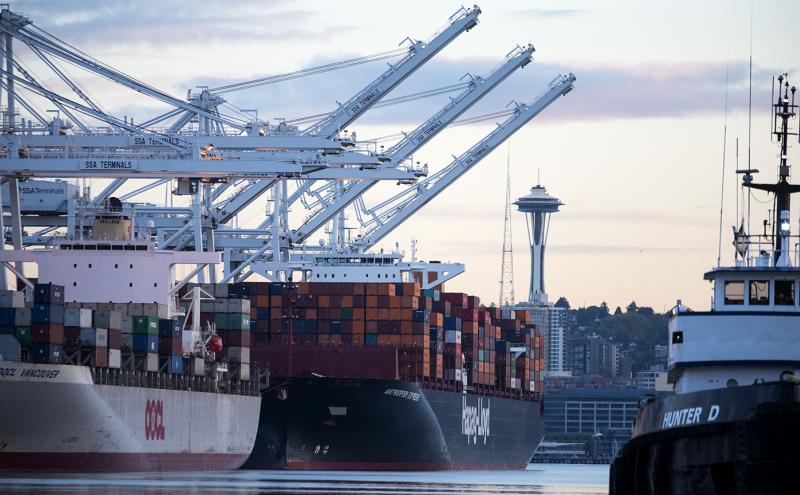
Editor’s note: The following Op-Ed column was published in the Seattle Times on December 16, 2018. Co-written by Port Commission President Courtney Gregoire and Port Executive Director Stephen P. Metruck, it is published solely under Gregoire’s name here on our website due to the nature of our blog publishing tool. Authorship remains as originally published in the Seattle Times.
Set aside the latest news about drone-delivered packages and consider the changes happening now in the ocean economy.
More than 90 percent of the world’s trade travels over water, with total volume expected to triple by 2050. The global value of the ocean economy is expected to reach $3 trillion in the next three decades, with the largest gains coming in tourism. Fisheries provide an increasingly essential source of food, employment, and revenue.
Every port city worth its salt wants this activity on its shores. An efficient gateway benefits consumers and producers on cost and convenience. Maritime jobs offer well-paid and reliable careers and diversify the local economy.
The Port of Seattle is seizing these benefits for our region. The Port Commission recently approved the most significant and forward-looking investments in our maritime industries in more than a generation. Our five-year plan invests in the industries where Seattle’s competitive advantages intersect with global growth trends: maritime cargo terminals, cruise tourism, commercial fishing, and industrial lands.
Despite natural advantages, Seattle still must compete aggressively for maritime business. The latest trend in ultra-large cargo vessels can mean more volume for future port calls, but only for those equipped with the infrastructure to serve those vessels. Infrastructure investments at the ports of Long Beach and Los Angeles and Prince Rupert in Canada require the Port of Seattle to make similar investments to stay competitive.
These investments advance a strategy we launched in 2015 when the Port of Seattle and Port of Tacoma formed the Northwest Seaport Alliance. Our partnership brought our formerly competitive cities together and set in motion a plan to make Seattle’s Terminal 5 more sustainable and big-ship ready.
The redeployment of Terminal 5 will consolidate international cargo operations and make room for the port to build a new cruise terminal alongside cargo operations. More cruise activity provides the port with new revenue to reinvest in cargo operations and generates new tourism and tax revenue for local businesses and the city. The port will determine the location for a new cruise terminal in 2019. We will work closely with stakeholders and the public on how this terminal gets built.
Commercial fishing enterprises flourish here, from family-run businesses to innovative large-scale operations. Our commercial fishing industry is well known for its economic value and its leadership in safety and sustainability. This plan also invests in docks and berths to ensure a thriving commercial fishing industry for another generation.
Strong cargo and commercial fishing businesses generate valuable manufacturing and light-industrial opportunities. Today, maritime industrial companies struggle to find affordable space. Within the Seattle industrial areas, particularly in the Ballard and Interbay areas, there has been almost no new development since the early 1970s.
Our growth strategy develops new manufacturing and light-industrial facilities on port property at Terminal 91 and Fishermen’s Terminal, in the heart of the commercial fishing industry.
The region needs consensus on the future of our working waterfront. Until recently, the city of Seattle convened an industrial lands advisory panel. Reconvening that panel with a maritime focus would improve awareness of our working waterfront and increase the public benefits. The port volunteers to reconvene and lead this panel.
Going forward, the individual projects in our five-year blueprint will require additional commission approval, environmental and community review. As we move ahead in the planning process, there will be multiple opportunities for this community engagement.
Seattle’s working waterfront is essential to economic development and equity strategies. We are especially reminded of this when we host more than 100 high school and college summer interns who are eager to learn about opportunities in port industries.
With the understanding and backing of our community, the next generation can continue building Seattle’s maritime industries to be the most equitable, sustainable, and successful in the world.




